How to find water for a well: three simplest methods
Well drilling is a complex and expensive process. It requires certain equipment and great physical effort. That is why the question of how to find water for a well is very interesting for modern masters to help eliminate unnecessary work, determining the optimal location for the location of the structure.
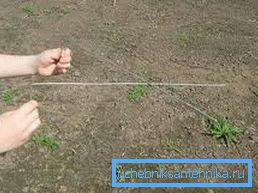
Method of determination
First you need to mention that there are a lot of ways to perform the task. However, some of them require the availability of expensive equipment, while others are so mystical and mysterious, that their result raises serious doubts.
That is why it is worthwhile to consider the most optimal methods that in practice have proven their reliability and accuracy (find out here how to get water into the house from a well).
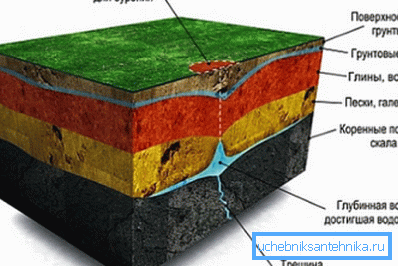
Clay pot method
- The simplest way to tell how to search for water for a well is that, in places where it is accumulated, strong evaporation constantly occurs on the surface. It can be seen visually after a hot day watching the curvature of the airspace in a certain area.
- Even in ancient times, our ancestors located inverted clay pots at the site, leaving them for a whole day. Then they were checked for moisture and in the place where the wettest dishes were located, and they drilled a well.
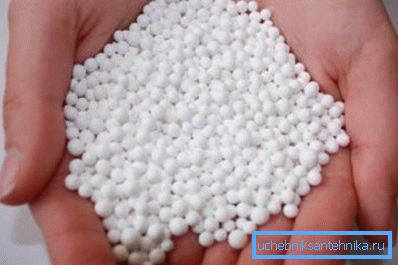
- Today, many tutorials on how to find water for a well at a site offer this method to be improved.
- To do this, take a certain amount of silica gel or salt and sew it into a canvas bag. Then the billet is dried in an oven or oven, and then weighed.
- After that, the product is instilled at the site of the proposed location of the well or at different control points to a depth of 1 meter.

- A day later, the bag is removed and weighed. Where the moisture is closest to the surface, the material will be most saturated with water, which naturally affects its weight.
- Some manuals, telling about how to find a place for a well at a site, suggest using clay bricks for these purposes, which are also dried and weighed.
Tip! If there are doubts in the choice of a particular place or independent measurements cause difficulties, then it is worthwhile to invite specialists with appropriate equipment for these purposes. Sometimes their services fully justify the costs associated with this, helping to save on material.

Pressure
- This method is based on pressure drops at a certain height.
- It can only be used if there is a water source in the form of a well or a river nearby. However, this method is used exclusively on large areas. You will also need a barometer for this.

- Manuals, telling about how to find water in the area under the well, first advised to make a control measurement near the water source. Then, passing through the site, observe the readings of the device and mark the places closest to the data to the test results.
- The difference of measurements is usually considered to be a certain depth of the aquifer, but professionals argue that this is not the case.
Tip! This method should not be considered the most reliable, since it is designed only for the terrain landscape, which sometimes does not always correspond to the location of the water bearing layers.
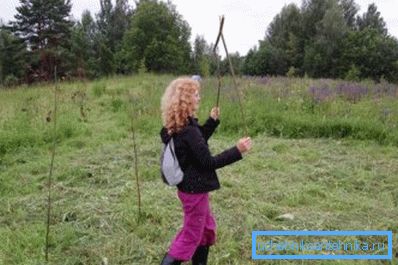
Pre-drilling
- This method is most accurate, but its price is quite high, since it is supposed to create a well with a depth of at least 7-8 meters. The fact is that it is at such a depth that the necessary strata are formed, which allow to get drinking water.
- If this well will be made by hand, then special equipment may be required. Usually, a standard garden drill is used for this, which is equipped with additional elements for lengthening.
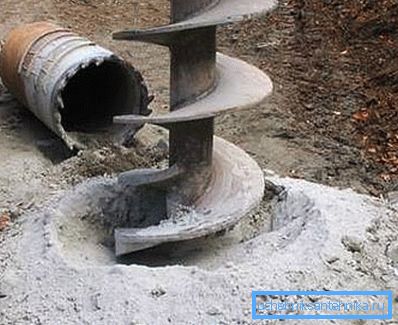
- It is worth noting that such a device needs to work autumn carefully so as not to break. Therefore, the installation manual recommends removing the soil every 20 cm.
- Typically, such wells do not protect against destruction by casing or pipes, since their purpose is only in preliminary exploration.
- It is necessary to say that this method of finding water is quite difficult, but it is he who gives 100% result.
Tip! The well is usually located on a small elevation. Moreover, all constructions of this type should be located at a certain distance from drainage systems, cesspools and places of waste disposal. Usually this distance is at least 35 meters, but in small areas it can be reduced to 25 meters.
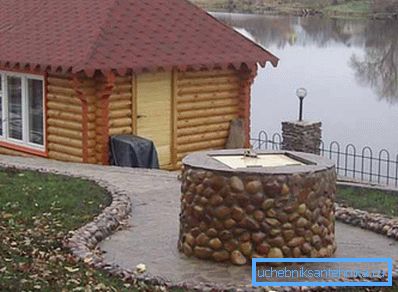
Recommendations of the masters
- Water search methods based on the use of metal frames, vines or animal bones should not be used if you do not want to drill a well at random. Their methodology is not justified, and the results are very doubtful.
- It is worth asking in the geodesic service about the availability of documentation for a specific site or located near it. Perhaps, such studies have already been done, which will greatly simplify the work immediately.
- Do not focus on the wells in neighboring areas. Sometimes the aquifer turns at a right angle.
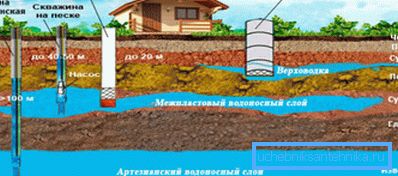
Conclusion
In the proposed video in this article, you can get more detailed information on how to search for a place for the manufacture of wells. Also based on the text presented above, it should be concluded that there are a lot of ways to solve this problem, but they all differ in their principle of operation and accuracy of readings (find out here how to get a pump from a well).
That is why professional masters advise to use special equipment for the well or to involve specialists in such work. This will greatly facilitate the whole process and can even help save money.